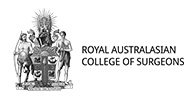In order to accurately determine whether or not a patient has cancer, a physical examination and a number of other tests are required so that the doctor can rule out any other condition.
CT Scan
CT scans are special X-rays that show the internal organs of your body. Dyes may also be injected, allowing the doctor to see the area more clearly.
Urinalysis
More than half of all patients with renal cell carcinoma (RCC) have haematuria or blood in their urine. Often this blood is present in such small amounts or is so diffused in the urine that it cannot be seen with the naked eye (called microscopic haematuria). To detect haematuria a chemical test of the urine is usually prescribed. On occasion, cells found in the urine are examined under a microscope for abnormalities. This procedure is called urine cytology.
Blood tests
Another procedure typically used in the diagnosis of RCC involves microscopic examination and/or chemical analysis of the patient's blood. These tests screen for indicators that may demonstrate the presence of cancer, such as:
- Anaemia (too few red blood cells; caused by internal bleeding, a common cancer symptom)
- Polycythaemia (too many red blood cells; sometimes caused by cancerous tumours in the kidney that trigger the release of EPO, a hormone that increases red blood cell production in bone marrow)
- Hypercalcaemia (high blood calcium levels) and elevated liver enzymes (conditions characteristic of RCC)
Cystoscopy
Because blood in the urine can result from other health problems, the doctor may order a cystoscopy to determine precisely where the internal bleeding is occurring. In cystoscopy, a long, thin, rigid or flexible optical scope is inserted through the urethra and into the bladder. The doctor then makes a visual examination of the urethra, bladder, and kidneys to locate the site of bleeding.
Fine Needle Biopsy
If a tumour has been diagnosed, the doctor may take a biopsy of cells to be examined in the laboratory.
Generally, the type of cancer cell indicates the relative aggressiveness of the disease.
'Clear cell' cancers look the least abnormal; they are round or polygon-shaped and contain an abundance of fat and sugar. The tumours they produce are yellow to orange in colour. Clear cell cancers are thought to be the least aggressive and respond better to treatment.
However, few tumours contain only clear cells. Darker 'granular cells' are usually present to some degree and have a larger, darker nucleus full of tiny pink granules called mitochondria. The tumours they produce tend to be grey to white in colour. Mitochondria are small, oval bodies that provide energy for cell growth. Their presence indicates a more aggressive form of cancer.
The most common form of tumour contains both clear and granular cells and is considered to be 'mixed'. This indicates the most aggressive form of kidney cancer. Mixed tumours that contain spindle shaped, 'sarcomatoid cells' have the least favourable prognosis. Although tumours composed exclusively of spindle cells are uncommon, the presence of sarcomatoid cells indicates a form of cancer that grows and spreads quickly.




